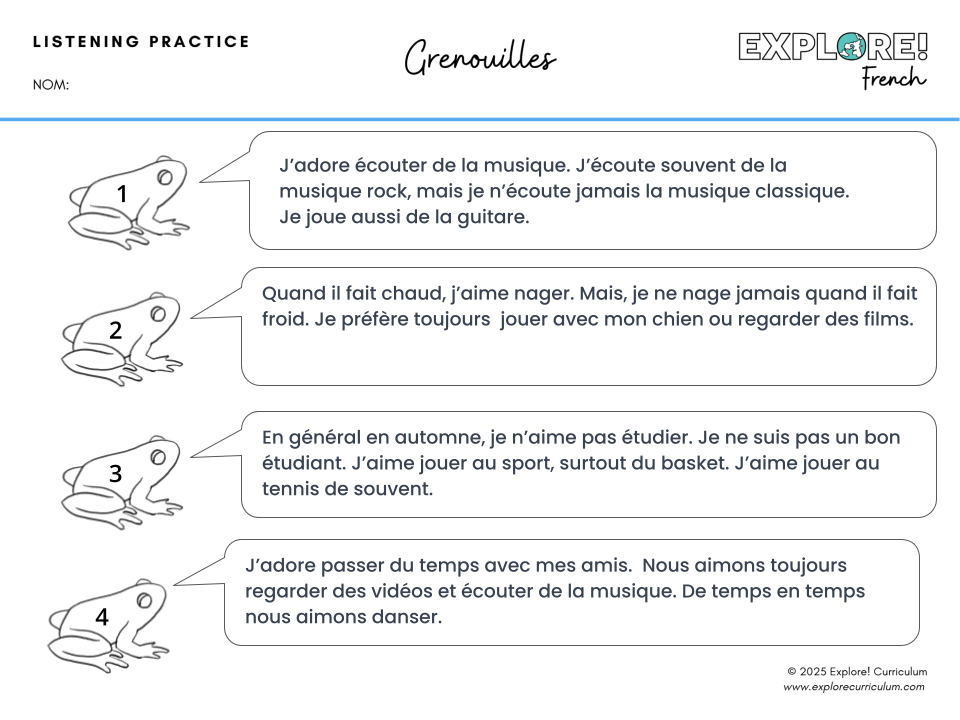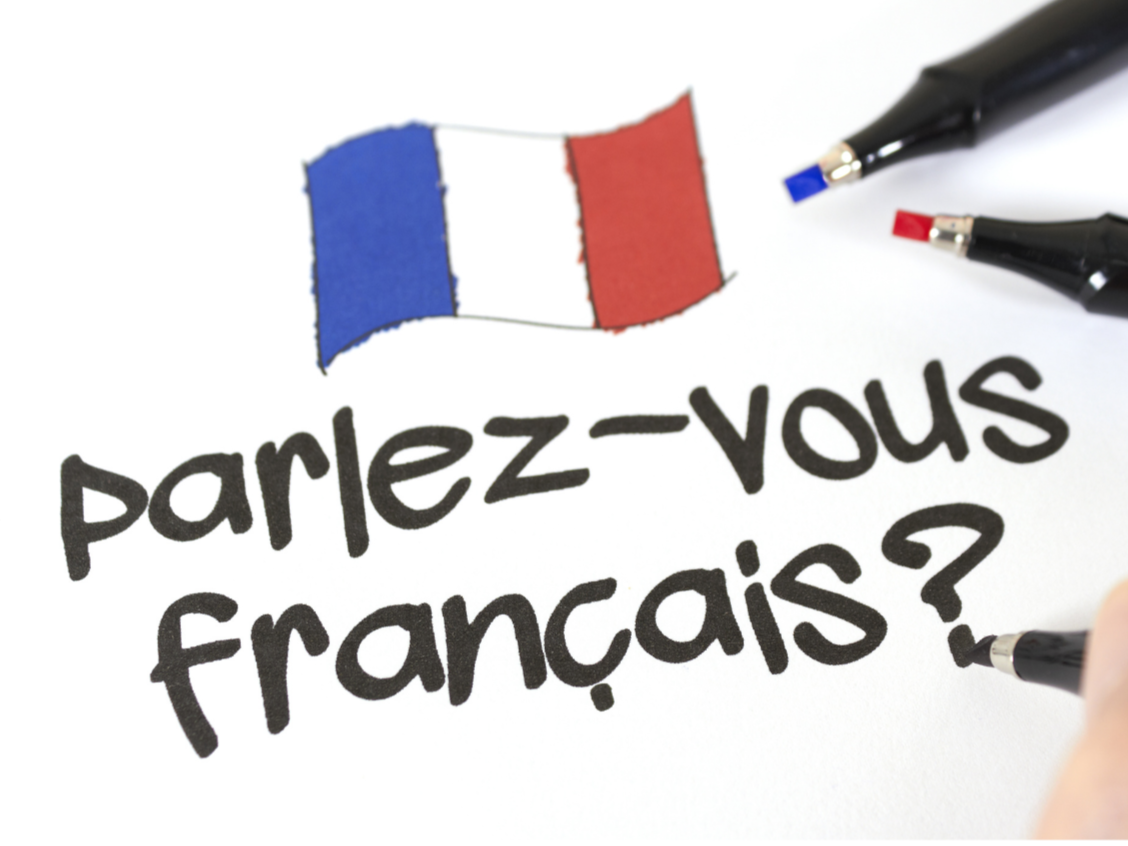Classroom Activities to Improve Students’ French Pronunciation
Many students are daunted by French pronunciation. The solution is frequent, short practice activities. Here are are few of my favorites!
French pronunciation can be tricky, a fact even native French speakers find amusing. Watch Alex and Tom from AT Frenchies interview President Macron about his views on the French language:
I’m no President Macron, but I do work a lot with students on improving their pronunciation. Here are a few of my favorite activities to help beginners develop good pronunciation habits.
Dictées
In this classic activity, the teacher reads aloud and students must transcribe what they hear accurately in French. Dictées have a reputation for being old school, but when used for brief, low-stakes practice, they can be a lot of fun!
I like to have students write on the desks with whiteboard markers for dictées. This serves a couple of purposes:
It’s very quick and easy to prep.
It seems a little bit naughty to write on the desks, and therefore students think it’s more fun!
Errors with whiteboard markers are easy to erase or quietly correct. This lowers the seriousness or overall stress level of the activity.
Short dictation activities strengthen the connection between pronunciation and writing
I don’t typically grade dictées and I usually make them up on the spot when we have a short time left at the end of class. As students write, I sometimes circulate and tell them “You have two mistakes – can you find them?” or give a fist bump to kids who got it perfect. After students work for a few minutes, I write the correct answer on the board and point out common errors. “Did you add an ‘x’ on the end of ‘deux’? Did you remember the cédille in ‘ça va’? If you got everything right, give yourself a pat on the back!”
Dictations help students draw connections between written and spoken French and are an easy way to highlight accurate pronunciation.
Delayed Dictations
In a twist on the above activity, I read students a short sentence aloud several times. Then, students must wait ten seconds before they begin writing. During the ten seconds, students will recite the sentence over and over to themselves. In addition to reinforcing correct pronunciation, this activity strengthens students’ working memory. (Thanks to Bethanie Drew for sharing this idea!)
“Dictées have a reputation for being old school, but when used for brief, low-stakes practice, they can be a lot of fun!”
Partner Dictations
Another twist on the classic. Students work in pairs, and the teacher provides them with complementary handouts. Student A reads their sentence aloud in French and student B must transcribe it. Then switch roles. In this activity, students practice all four language modes (reading, writing, listening, and speaking) and when there is an error, they must work together to pinpoint why.
Minimal Pairs
A minimal pair is a pair of words that are almost the same – only one sound is different. There are many of these in French! For example, beginners can benefit from practicing silent vs. pronounced final consonant in masculine and feminine adjectives. For example:
vert /verte
amusant / amusante
grand / grande
bon / bonne
Minimal pairs can also help with vowel sounds, such as:
tu / tous
deux heures / douze heures
parti / parté
un peu / un pot
There are many other minimal pairs in French. Here are two ways to use them:
1) Give students a list of minimal pairs and have them circle the one they hear you say.
2) Challenge students to read minimal pairs aloud to a partner and then challenge volunteers to pronounce them for the class.
For a comprehensive list of French minimal pairs, check out this website:
Thanks to Sarah Giddens for sharing this idea!
Grenouilles (find the error)
Any activity that starts with plastic squeaky frogs is a winner!
Grenouilles is a fun, low-prep activity that was shared with me by Caroline Hocutt. First, you need some plastic squeaky frogs. They are available on Amazon and students love them!
Next, give students a list of several sentences. I add a speech bubble coming from a frog’s mouth to each sentence.
Now, read the sentence aloud, but with some errors. Each time students hear an error they must squeak their frog. Then I give kids 10 seconds to confer with their partner about what the error was before I randomly call on someone. If that kid can tell me what I said incorrectly, the class gets a point. If not, I get a point. Also, if anyone squeaks their frog when they’re not supposed to, I get a point.
Squeaking the frogs is pretty irresistible, so I usually win this game. The kids love the frogs and want to keep them, so I must pass them out and pick them up one by one.
I suppose you could do this activity without the frogs, but it’s hard to imagine it being as much fun.
Partner Grenouilles
This is the same as above, but paired students have slightly different scripts. Partner A reads and Partner B must squeak their frog when they hear a difference from their script.
This game gets pretty raucous, so you might want to drink some coffee before you start.
Memorizing anything in French
Whatever works for your students: song lyrics, famous quotes, poems, a skit… when students work at committing a text to memory, the pronunciation sticks.
Incorporate regular, short, varied, and fun pronunciation practice, and you will see your students improve! These activities are a great place to start. Which one do you want to try in class? What is your favorite pronunciation practice activity? Share in the chat!




